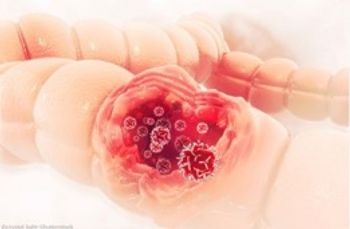
- ONCOLOGY Vol 11 No 6
- Volume 11
- Issue 6
SSO Practice Guidelines: Introductory Remarks
The Agency for Health Care Policy and Research established a forum for quality and effectiveness in health care under which practice guidelines were to be evaluated. The groups involved in this forum turned to the Institute of Medicine to evaluate the
The Agency for Health Care Policy and Research established a forum forquality and effectiveness in health care under which practice guidelineswere to be evaluated. The groups involved in this forum turned to the Instituteof Medicine to evaluate the entire issue of such guidelines. The Instituteof Medicine identified considerable conflicts and differences in terminologyand defined four different but related definitions[1,2]:
- Practice guidelines are systematically developed statementsto assist practitioners in making decisions about appropriate health carefor patients in specific clinical circumstances.
- Medical review criteria are systematically developed statementsthat can be used to assess the appropriateness of specific health-caredecisions, services, and outcomes.
- Standards of quality are authoritative statements of minimallevels of acceptable performance or results, excellent levels of performanceor results, or the range of acceptable performance or results.
- Performance measures are methods to estimate or monitor theextent to which the actions of a health-care practitioner conform to practiceguidelines.
Thousands of practice guidelines/practice parameters have been publishedby various professional organizations. The American Medical Association,[3]American College of Physicians,[4,5] and others[6-8] have written extensivelyabout methodologic, quality, and cost considerations in relation to suchguidelines. In the early 1990s, the Society of Surgical Oncology participatedin the development of extensive evidence-based standards of care for breastconservation treatment of primary breast cancer patients.[9]
More recently, the Society undertook a more ambitious initiative aimedat developing surgical practice guidelines directed toward the evaluationand initial management of patients with signs and symptoms cancer. Theseguidelines encompass the major cancer sites.
Scope and Format of the Guidelines
The Society of Surgical Oncology practice guidelines were based on detailedreview by nationally recognized experts in their respective fields. Eachguideline represents a consensus of multiple members of the Society ofSurgical Oncology who are well known for their expertise. The authors havestressed the symptoms and signs of primary cancer without discussing screeningprograms. The guidelines also discuss the timely evaluation of the symptomaticpatient, appropriate preoperative evaluation for extent of disease, andthe role of the surgeon in the diagnosis and treatment of cancer.
Separate sections on adjuvant therapy, follow-up programs, or managementof recurrent cancer have been intentionally omitted. For many sites, perioperativeadjuvant combined-modality therapy has been shown to improve outcomes.Where appropriate, such therapy is discussed under surgical management.
The guidelines are presented in minimal outline form as a delineationof therapeutic options. It is not the intent of these guidelines to definein detail all of the alternatives, risks, and outcomes for surgical orcombined-modality therapy of the cancer patient. For most sites, the generallyacceptable therapeutic options are defined.
Following each guideline is a brief narrative highlighting and expandingon selected sections of the guideline document, with a few relevant references.The current staging system for the site and approximate 5-year survivaldata are also included.
As stressed by the Institute of Medicine, some degree of diversity iswarranted by differences in the interpretation of scientific evidence,differences in individual patient characteristics, and physicians' preferences,as well as local variation in medical resources. However, diversity inpractice is unacceptable when it originates from poor skills, poor managementof the delivery system, ignorance, or deliberate disregard of well-documented,preferable practices.
References:
1. Field MJ, Lohr KN (eds): Guidelines for Clinical Practice: From Developmentsto Use. Washington, DC, National Academy Press, 1992.
2. Field MJ, Lohr KN (eds): Clincial Practice Guidelines: Directionsfor a New Program. Washington, DC, National Academy Press, 1990.
3. Attributes to Guide the Development of Practice Parameters. Chicago,Office of Quality Assurance and Medical Review, American Medical Association,1993.
4. Farmer RG ,White LJ: Medical quality assessment and the AmericanCollege of Physicians. J Am Coll Cardiol 14:69A-71A, 1989.
5. Ball JR. Practice guidelines and their role in quality assuranceand cost effectiveness. Qual Assur Health Care 2:31-36, 1990.
6. Phelps CE: The methodologic foundation of studies of the appropriatenessof medical care. N Engl J Med 329:1241-1245, 1993.
7. McDonald CJ, Overhage JM: Guidelines you can follow and can trust:An ideal and an example (editorial). JAMA 271,:872-873, 1994.
8. Browman GP, Levine MN, Mohide EA, et al: The practice guidelinesdevelopment cycle: A conceptual for practice guidelines development andimplementation. J Clin Oncol 13:502-512, 1995.
9. Winchester DP, Cox JD, for the American College of Radiology, AmericanCollege of Surgeons, College of American Pathologists, and Society of SurgicalOncology: Standards for breast-conservation treatment. CA Cancer J Clin42:134-162, 1992.
Articles in this issue
over 28 years ago
Use of Adjuvent Analgesics Profiled at Pain Conferenceover 28 years ago
Chromosomal Changes Linked to Family History of Lung Cancerover 28 years ago
Bacterial Infection in Patients With Cancer: Focus on Preventionover 28 years ago
Docetaxel in Combined Modality Therapy for Breast Cancerover 28 years ago
Role of Diet in Cancer Hard to Study, Expert Saysover 28 years ago
Guidelines for the Early Referral of Patients to Cancer Specialistsover 28 years ago
New Drugs May Brighten Ovarian Cancer Pictureover 28 years ago
Researchers Hope Function of BRCA1 Gene Holds Key to New TreatmentsNewsletter
Stay up to date on recent advances in the multidisciplinary approach to cancer.































































































